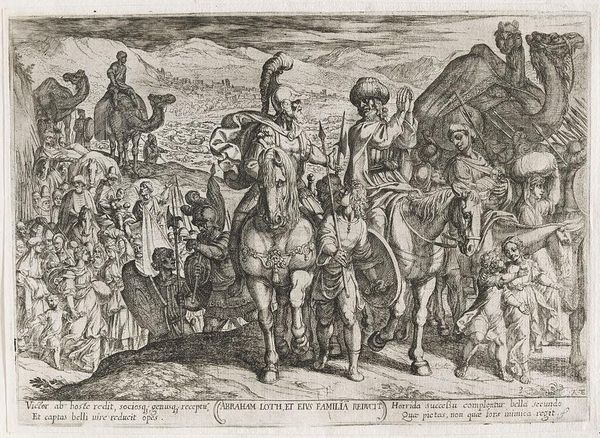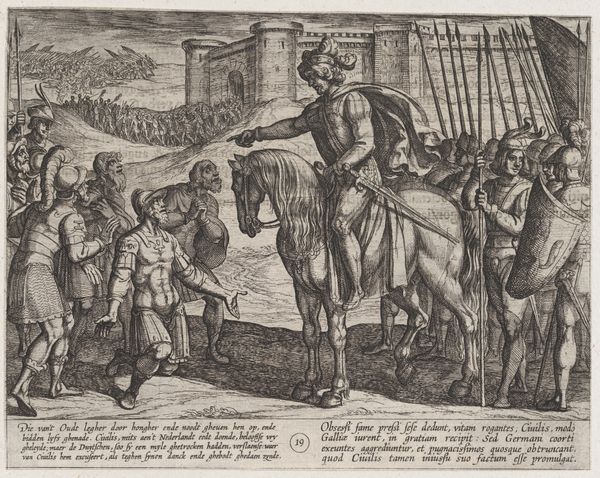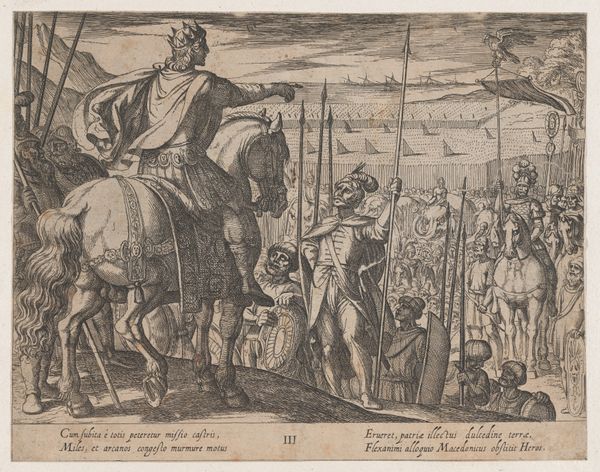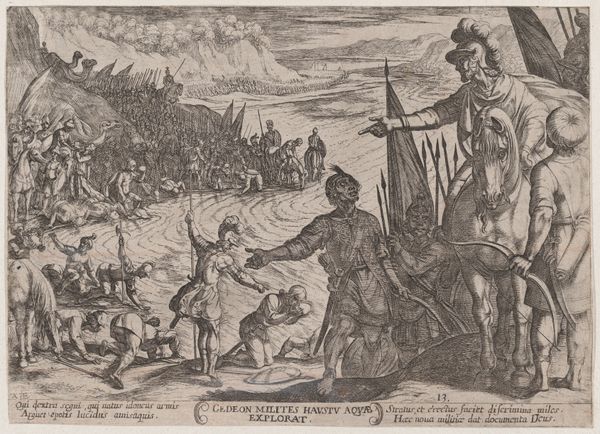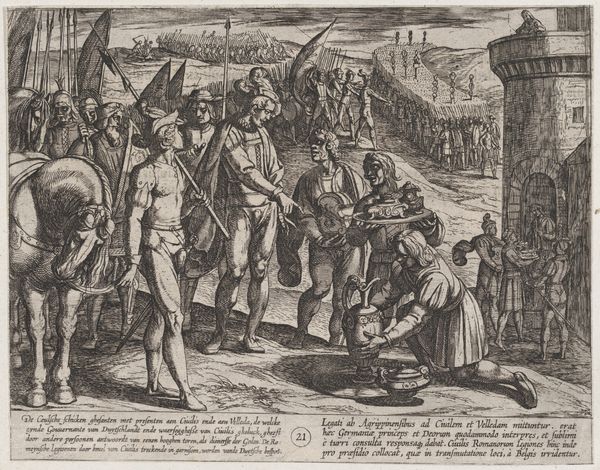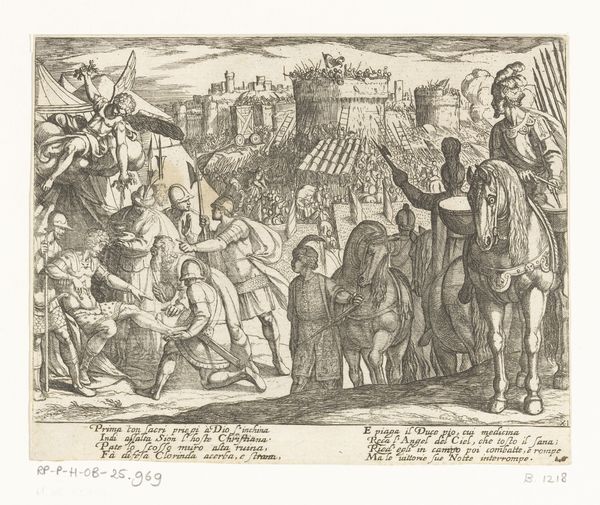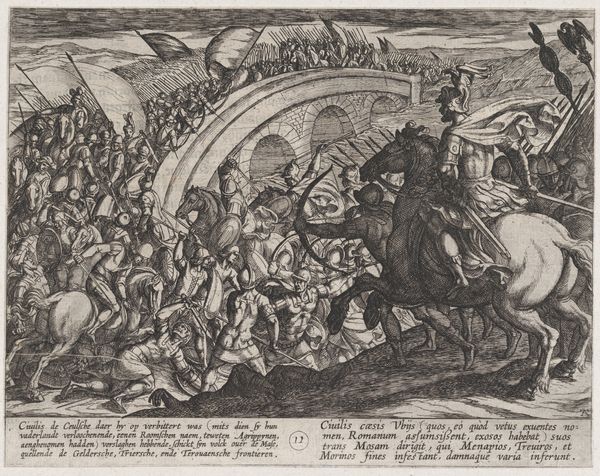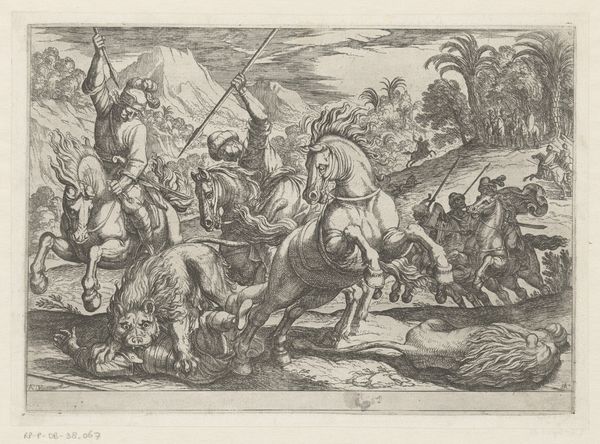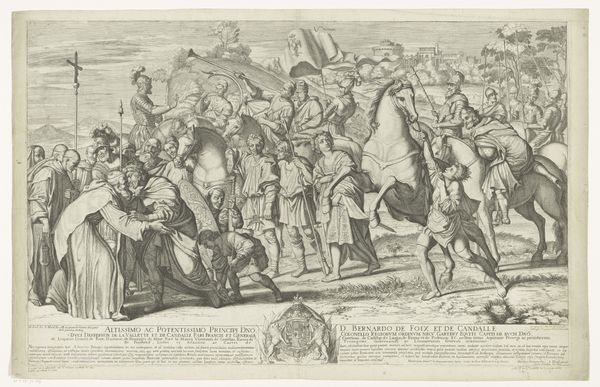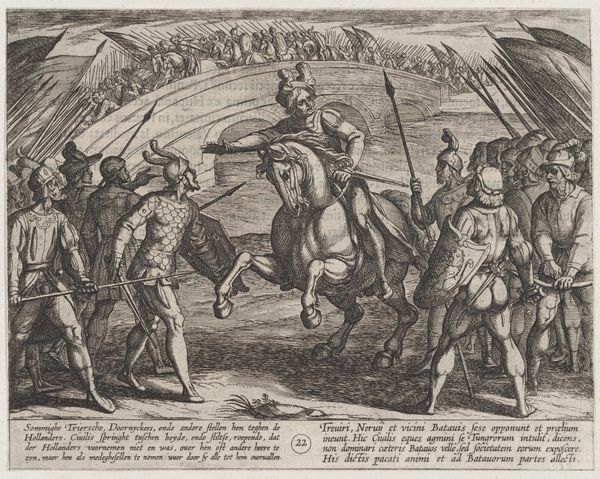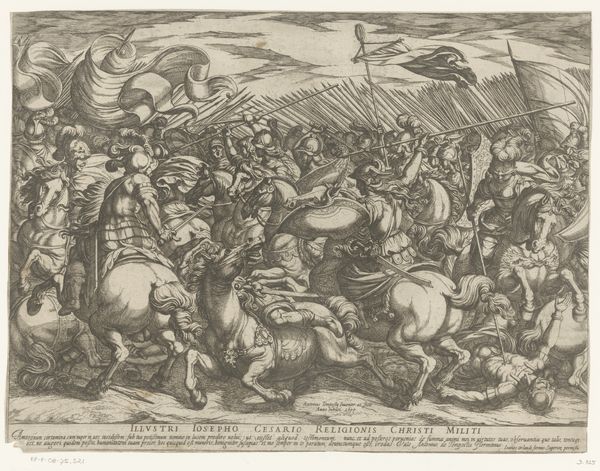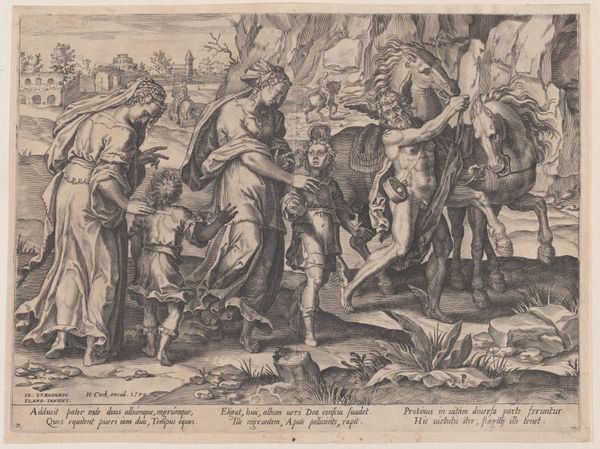
Plate 3: Abraham Taking Lot and His Family to His Own Land, from 'The Battles of the Old Testament' 1585 - 1615
0:00
0:00
drawing, print, etching, engraving
#
drawing
#
narrative-art
# print
#
etching
#
landscape
#
figuration
#
11_renaissance
#
history-painting
#
northern-renaissance
#
engraving
Dimensions: Sheet: 7 7/8 × 10 7/8 in. (20 × 27.6 cm)
Copyright: Public Domain
Curator: Here we have Antonio Tempesta’s print, "Plate 3: Abraham Taking Lot and His Family to His Own Land, from 'The Battles of the Old Testament.'" This etching and engraving, made between 1585 and 1615, depicts a biblical scene rendered with incredible detail. Editor: It feels…overwhelming, almost chaotic. So many figures crammed into the composition, all those tiny lines creating a dizzying effect. It's visually dense. Curator: Indeed. Notice how Tempesta employs hatching and cross-hatching to build form and texture. The strategic use of line creates tonal variations, giving depth to the landscape and figures. The composition is arranged to guide the eye, albeit through a very busy scene. Editor: But what story is being told, and by whom? Look at Abraham, almost militaristic on horseback. This isn't a gentle return; it's a forceful assertion of patriarchal authority, isn't it? Lot and his family are almost props in a display of power. Curator: Certainly, Abraham's elevated position within the visual field reinforces his dominance. He's not merely guiding; he is leading and protecting in a way that reflects idealized leadership qualities valued during the Renaissance. The figures' positioning establishes a hierarchy. Editor: Hierarchy yes, but also perhaps an anxiety about outsiders. The composition reminds me of refugee migrations throughout history and what their social, racial, and economic integration signifies in times of upheaval. Where is ‘home’ here, and who defines it? Curator: You raise a crucial point about belonging. I'm drawn to the way Tempesta rendered the drapery. See how it flows and folds? It adds movement and a sense of drama. Technically, the artist masterfully captured light and shadow. Editor: Yes, technically accomplished, but technique serves a narrative. What kind of reception will Lot and his family receive? The ambiguity in their expressions – some hopeful, others weary – suggests their uncertain future. Curator: A final observation on the overall linear quality, the careful use of contour defining the forms – this lends a sense of classicism, of grounding the scene in established artistic traditions. Editor: While adhering to classicism in form, the narrative highlights tensions and power dynamics still resonant today. It pushes me to consider migration through a modern lens, with considerations of cultural impact always at the forefront.
Comments
No comments
Be the first to comment and join the conversation on the ultimate creative platform.
